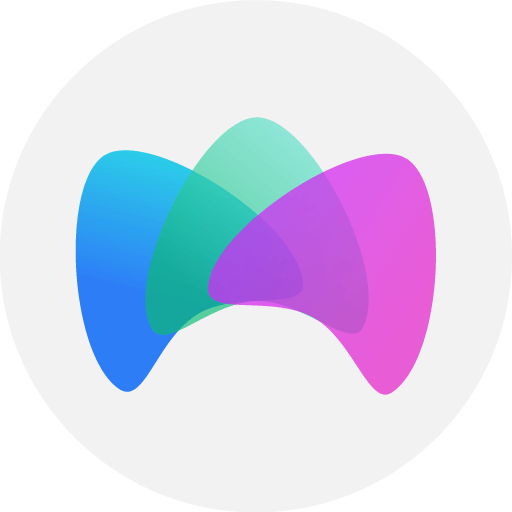
Why should we care about visual content? Most people think reading is the best way to learn, which is why most of our school materials are still text-based. However, psychologists say that most of us learn without the use of language and that most of our learning happens without conscious effort.
In fact, one study shows that the brain processes images in as little as 13 milliseconds, literally faster than the blink of an eye, which takes about 300 milliseconds. It is no wonder that text with visual content tends to be more persuasive than text-only content. Add audio into the mix to increase your engagement, and you have a marketing powerhouse.
The webinar, is that you?
Webinars, or web-based seminars, are online interactive content happening in real-time. A key feature of webinars is the audience’s ability to participate actively by asking questions, making comments, and otherwise discussing the topic at hand. They can even record the session if the streaming software has that capability.
Because it uses audio, visual content, and text in concert, webinars are peculiarly suited for marketing and promotions. In many cases, webinars are free to the public in the hopes that they will lead to the desired action, such as enrolling in a class, buying a product or service, or registering on a website. Sometimes webinars are the products themselves, where the audience has to pay to participate.
In any case, your text content is still important because it remains the meat of your presentation, so you may want to have a professional essay service make it for you. However, you need the right visual content when creating your webinars because you want your audience to understand you. Your visual content helps to keep your audience engaged, especially if your webinar is more than a few minutes long. Here are the 7 most popular types of visual content to use in your webinars.
Images

Images to text content are like condiments in your sandwich. It is still good without it, but it is not as interesting. Images add depth and variation to your content, giving your eyes some relief from reading blocks of text. According to Jeff Bullas, articles that include relevant images get nearly double the views than the same content sans images.
While webinars are not precisely articles, the same principle applies. You want to give your audience something else to look at other than your face to keep their attention from wandering. The right images can also bring home a point much better than talking about it.
Videos

Show, don’t tell. Videos make it much easier to show your audience what you mean. It is also easy to present your service or product much more convincingly rather than just talking about it, especially if you can mix in some user-generated videos. Perhaps most importantly, video increases conversion by more than 80%.
You can simply include generic royalty-free videos into your webinar if you don’t want to make your own. But it will not have the same impact as one customized for your purposes. It is easy enough to make one with idiot-proof and free video editing software for Windows or Mac, or you could have a professional service do it for you.
Infographics

Infographic provides easy-to-digest information using images and text, so what’s not to love? It is the perfect marriage to keep webinar audience engaged when discussing boring things like statistics and complex concepts. How best to illustrate its value for your webinar? Why, with an infographic, of course!
Applications such as Canva make it so easy to make an awesome-looking infographic. Just ensure you don’t get carried away with the design and forget about checking your data’s accuracy. Remember that infographics are shared often, so you want to avoid ending up with an egg on your face online.
Graphs

Like the country cousin of the infographic, graphs are quick ways to present stats to emphasize a point during your webinar, especially if you are trying to illustrate a progression. Most word-processing software includes graph tools. So, you have to put the data in and choose your graph type. Pie charts and bar charts are the easiest for most people to understand. But you can use many other types of graphs.
Slides

Slide presentations are a good way to illustrate a large amount of data that will not fit comfortably into a single infographic. If done properly, each slide can be as memorable as an infographic, and you can go into more detail. Your slides can be serious, or they can be funny, but they should always be informed.
You can also use your slide deck as a teaser to promote your webinar. Include just a few slides to let them know what to expect, and upload them to SlideShare or a similar site with information about your upcoming webinar.
Memes

A relatively recent entry into the visual content arena, memes are quirky and highly memorable, making them valuable for your webinar. Although the term was coined in 1976, it did not gain traction until the Internet used it to refer to humorous captioned images replicated for different situations. This type of visual content may not always be appropriate for your market, but a little well-placed humor significantly impacts your engagement in most cases. You can make your own quite easily.
Quote cards

You might think that quote cards are a lazy way to put visual content in your webinars, but it is surprisingly effective. Inspirational quotes are among the most shared posts on social media, so you can deduce that it works to engage the interest and imagination of most people.
Ideally, your quote cards should be related to your product or service, but it is unnecessary. In many instances, they stand on their own as a start and stop for your webinars, a take-home for your participants. It is a great tool for recall for your webinar, especially if it creates awareness and branding for your business.
Conclusion
Visual content is a necessary part of your webinar. This list is not exhaustive, but they are the most popular types. You don’t have to include all of them. But if you want your webinar to be memorable and productive, you should include at least two.

An expert behind the simplified online meeting and webinar software platform, MyOwnConference. In today’s flexible work environment, Dan offers invaluable life hacks, in-depth reviews, and savvy tips for organizing, promoting, and excelling in virtual conferences and webinars.
